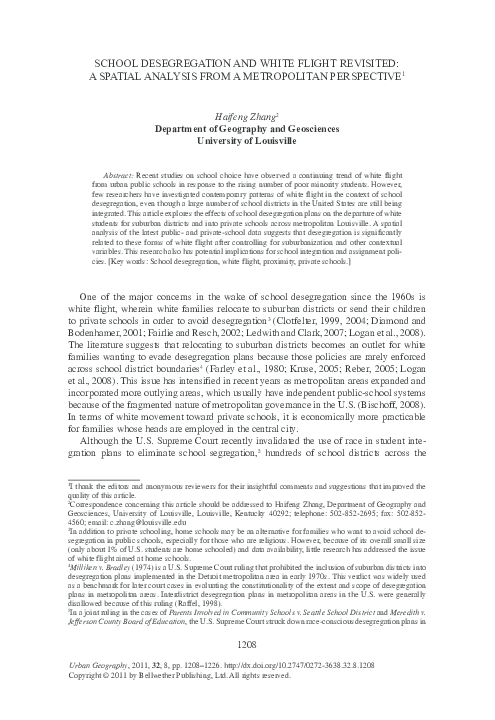The Justice Department And The End Of A School Desegregation Order: A Legal Perspective

Table of Contents
The Legal History of School Desegregation and the Justice Department's Role
Brown v. Board of Education and its Aftermath
The landmark 1954 Supreme Court case, Brown v. Board of Education, declared state laws establishing separate public schools for black and white students to be unconstitutional. This monumental decision marked the beginning of a long and arduous struggle to desegregate America's schools. The Justice Department played a crucial role in enforcing this ruling, initially through litigation and the filing of lawsuits against recalcitrant school districts.
- Key legal arguments: The Court's ruling centered on the Fourteenth Amendment's Equal Protection Clause, arguing that separate educational facilities were inherently unequal.
- Initial successes and challenges: While some districts complied readily, many others resisted through various legal maneuvers and delaying tactics, leading to protracted legal battles.
- Early resistance from states and districts: Massive resistance in the South, including the use of "pupil placement" laws designed to circumvent desegregation, posed significant challenges to the Justice Department’s efforts.
The Evolution of Judicial Oversight
Federal courts assumed a critical role in overseeing desegregation efforts, issuing orders and setting timelines for compliance. The Justice Department's involvement extended to monitoring these court-ordered processes, providing legal support to plaintiffs, and intervening in cases where compliance was lacking.
- Types of court orders: Orders varied widely, from busing mandates to remedial programs aimed at addressing racial imbalances and disparities in resources.
- The role of unitary status determinations: A crucial aspect of the process involved the determination of "unitary status," signifying that a school district had fully complied with desegregation orders.
- The shift in focus from de jure to de facto segregation: Over time, the focus shifted from addressing legally mandated segregation (de jure) to addressing segregation that arose from factors like housing patterns and residential segregation (de facto), posing new challenges for legal intervention.
The Shifting Priorities of the Justice Department
The Justice Department's approach to school desegregation evolved over time, reflecting changes in political climates and legal interpretations. Different administrations prioritized different aspects of enforcement, leading to variations in policy and resources allocated to school desegregation cases.
- Examples of changes in policy and enforcement under different administrations: Some administrations vigorously pursued desegregation cases, while others adopted more passive approaches.
- Impact of legal challenges to desegregation orders: Legal challenges, often arguing against busing or other remedial measures, significantly influenced the trajectory of desegregation efforts and the Justice Department's role.
Legal Strategies for Ending School Desegregation Orders
Demonstrating Unitary Status
For school districts to have desegregation orders terminated, they must demonstrate they have achieved unitary status. This involves a rigorous process of proving the elimination of all vestiges of past segregation.
- Key metrics used to assess unitary status: These metrics include racial balance in student populations across schools, equitable allocation of resources (funding, staffing, facilities), and elimination of discriminatory practices.
- Legal challenges to unitary status declarations: Declarations of unitary status are often challenged by plaintiffs who argue that vestiges of segregation persist, prolonging the legal battles.
The Role of Statistical Evidence
Statistical evidence plays a critical role in demonstrating racial balance and equitable resource allocation. The analysis of enrollment data, resource distribution, and student achievement data helps determine if a district has met the criteria for unitary status.
- Types of statistical analysis used: Various statistical techniques, such as regression analysis and other multivariate methods, are employed to analyze the data.
- Limitations and potential biases in statistical data: It's crucial to acknowledge the limitations and potential biases in statistical data, and interpret findings cautiously.
- The role of expert witnesses: Expert witnesses, statisticians, and educational researchers play a key role in presenting and interpreting statistical evidence in court.
Addressing Vestiges of Segregation
Even after significant progress, vestiges of past segregation may remain. These lingering effects can manifest in various ways, hindering true educational equity.
- Examples of vestiges: Racially isolated schools, unequal funding between schools in predominantly minority versus majority-white neighborhoods, and discriminatory disciplinary practices are all potential vestiges.
- Challenges in identifying and eradicating vestiges: Identifying and addressing these vestiges can be complex and challenging, often requiring sustained effort and comprehensive remedial plans.
The Societal Impact of Ending School Desegregation Orders
The Re-segregation of Schools
The termination of desegregation orders has, in some cases, led to a resurgence of school segregation. Various factors contribute to this troubling trend.
- Residential segregation: Persistent housing segregation contributes to racially and economically isolated school populations.
- School choice policies: Some school choice policies, if not carefully designed, can exacerbate segregation by allowing families to select schools based on factors that perpetuate segregation.
- Funding disparities: Unequal funding between school districts and schools based on property taxes can disproportionately affect schools serving minority populations.
- The impact on educational equity: Re-segregation undermines educational equity and perpetuates achievement gaps between racial and socioeconomic groups.
Long-Term Educational Outcomes
School segregation has long-lasting consequences for students' educational attainment and future opportunities.
- Achievement gaps: Students in segregated schools often face significant achievement gaps compared to their peers in more integrated settings.
- Disparities in access to resources: Segregated schools may lack access to vital resources such as qualified teachers, advanced courses, and technology.
- Impact on social mobility: Segregation can limit social mobility and perpetuate cycles of poverty and inequality.
Civil Rights Implications
Ending school desegregation orders raises significant civil rights implications, directly impacting the pursuit of educational equity.
- The role of the Justice Department in upholding civil rights: The Justice Department's commitment to upholding civil rights is paramount in ensuring equal educational opportunities for all students.
- The continuing relevance of Brown v. Board of Education: The principles established in Brown v. Board of Education remain fundamentally important in the ongoing fight for educational justice.
Conclusion: The Justice Department and the End of School Desegregation Orders: A Legal Perspective – Key Takeaways and Call to Action
The Justice Department’s role in ending school desegregation orders is multifaceted and deeply intertwined with the complex legal and social history of racial inequality in American education. While legal strategies have aimed to achieve unitary status and eliminate vestiges of segregation, the potential for re-segregation and the persistent achievement gaps highlight the ongoing challenges in securing educational equity. The Justice Department's actions, past and present, significantly shape outcomes, underscoring the need for continuous vigilance and a commitment to the ideals of Brown v. Board of Education.
We urge further research and discussion on the continued challenges of achieving educational equity and the importance of monitoring the Justice Department’s role in school desegregation cases. Explore resources from organizations like the NAACP Legal Defense and Educational Fund and the ACLU for more information on this critical issue. Understanding the legal and social aspects of school desegregation, and the ongoing impact of the Justice Department's involvement, is crucial for building a more equitable future for all students. Let's continue the conversation about the Justice Department and the pursuit of true school desegregation.

Featured Posts
-
 Blockchain Analytics Firm Chainalysis Bolsters Its Ai Arsenal With Alterya Purchase
May 03, 2025
Blockchain Analytics Firm Chainalysis Bolsters Its Ai Arsenal With Alterya Purchase
May 03, 2025 -
 Preoccupations De Macron Militarisation De L Aide Humanitaire A Gaza Par Israel
May 03, 2025
Preoccupations De Macron Militarisation De L Aide Humanitaire A Gaza Par Israel
May 03, 2025 -
 Analyzing Us Market Share Ps 5 Vs Xbox Series X S Sales
May 03, 2025
Analyzing Us Market Share Ps 5 Vs Xbox Series X S Sales
May 03, 2025 -
 Finom Baromfihus Ismerje Meg A Mecsek Baromfi Kft Kme Vedjegyes Termekeit
May 03, 2025
Finom Baromfihus Ismerje Meg A Mecsek Baromfi Kft Kme Vedjegyes Termekeit
May 03, 2025 -
 Elon Musks Departure Teslas Exclusive Ceo Search Begins
May 03, 2025
Elon Musks Departure Teslas Exclusive Ceo Search Begins
May 03, 2025
